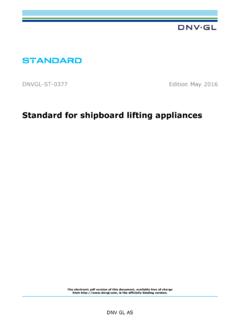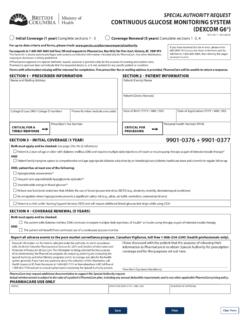Transcription of THERMOPHYSICAL PROPERTIES OF STAINLESS STEELS
1 75-55 PLEASE RETURN TOMFCBRANCHLIBRARYANL-75-55 THERMOPHYSICAL PROPERTIES OFSTAINLESS STEELSbyChoong S. KimLC\ JILNL Technical Library111111111111111111111111111111111 1111111072108 BASE TECHNOLOGYU of C-AUVUSERDA ARGONNE NATIONAL LABORATORY, ARGONNE, ILLINOISP repared for the ENERGY RESEARCHAND DEVELOPMENT ADMINISTRATIOND ivision of Reactor Research and Developmentunder Contract W-31-109-Eng-38 The facilities of Argonne National Laboratory are owned by the United States Govern-ment. Under the terms of a contract (W-31-109-Eng-38)between the U. S. Energy Research andDevelopment Administration, Argonne Universities Association and The University of Chicago,the University employs the staff and operates the Laboratory in accordance with policies andprograms formulated.
2 Approved and reviewed by the OF ARGONNE UNIVERSITIES ASSOCIATIONThe University of ArizonaCarnegie -Mellon UniversityCase Western Reserve UniversityThe University of ChicagoUniversity of CincinnatiIllinois Institute of TechnologyUniversity of IllinoisIndiana UniversityIowa State UniversityThe University of IowaKansas State UniversityThe University of KansasLoyola UniversityMarquette UniversityMichigan State UniversityThe University of MichiganUniversity of MinnesotaUniversity of MissouriNorthwestern UniversityUniversity of Notre DameThe Ohio State UniversityOhio UniversityThe Pennsylvania State UniversityPurdue UniversitySaint Louis UniversitySouthern Illinois UniversityThe University of Texas at AustinWashington UniversityWayne State UniversityThe University of WisconsinNOTICEThis report was prepared as an account of work sponsoredby the United States Government.
3 Neither the United Statesnor the United States Energy Research and Development Ad-ministration, nor any of their employees, nor any of theircontractors, subcontractors, or their employees, makes anywarranty, express or implied, or assumes any legal liabil-ityor responsibility for the accuracy, completeness or use-fulness of any information, apparatus, product or processdisclosed, or represents that its use would not infringeprivately-owned rights. Mention of commercial products,their manufacturers, or their suppliers in this publicationdoes not imply or connote approval or disapproval of theproduct by Argonne National Laboratory or the U. S. EnergyResearch and Development in the United States of AmericaAvailable fromNational Technical Information ServiceU.
4 S. Department of Commerce5285 Port Royal RoadSpringfield, Virginia 22161 Price: Printed Copy $ ; Microfiche $ Category:LMFBR Fuels and MaterialsEngineering and Development(UC-79b)ANL-75-55 ARGONNE NATIONAL LABORATORY9700 South Cass AvenueArgonne, Illinois 60439 THERMOPHYSICAL PROPERTIES OF STAINLESS STEELSbyChoong S. KimChemical Engineering DivisionSeptember 1975 TABLE OF CONTENTSPageAbstract 1I. INTRODUCTION 1II. CALCULATION PROCEDURES AND RESULTS , Entropy, andSpecific Heat Pressure C. Density and ThermalExpansion Coefficient D. Thermal Conductivity andThermal Diffusivity III. CONCLUDING REMARKS Acknowledgements2471319192324 ReferencesLIST OF FIGURESNo. Title Page 1 Enthalpies of STAINLESS STEELS vs.
5 Temperature 6 2 Specific Heats of STAINLESS STEELS vs. Temperature 6 3 Entropies of STAINLESS STEELS vs. Temperature 7 4 Vapor Pressures of STAINLESS STEELS vs. Temperature 10 5 Densities of STAINLESS STEELS vs. Temperature 15 6 Linear Thermal Expansion Coefficients of StainlessSteels vs. Temperature 15 7 Thermal Conductivities of STAINLESS STEELS 21 8 Thermal Diffusivities of STAINLESS STEELS 21 9 Viscosities of STAINLESS STEELS vs. Temperature 22 LIST OF TABLESNo. Title Page 1 Compositions of STAINLESS STEELS Type 304L and Type 316L(weight per cent) 12 Thermodynamic PROPERTIES of STAINLESS STEELS Type 304 Land Type 316L 53 Vapor Pressures of Constituent Elements of StainlessSteels 84 Vapor Pressures of STAINLESS STEELS Type 304L andType 316L 95 Densities of Constituent Elements of StainlessSteels 116 Comparison of Experimental and Calculated DensityValues of Type 304 and Type 316 STAINLESS STEELS 127 Densities and Linear Expansion Coefficients ofStainless STEELS Type 304L and Type 316L 148 Thermal Conductivity Changes on Melting ofMetal Elements 169 Experimental and Calculated Values of LiquidMetal Thermal Conductivities 1710 Thermal Conductivities and Thermal Diffusivitiesof STAINLESS STEELS Type 304L and
6 Type 316L 2011 Viscosities of STAINLESS STEELS 22 THERMOPHYSICAL PROPERTIES OF STAINLESS STEELSbyChoong S. KimABSTRACTR ecommended values of the thermodynamic and transportproperties of STAINLESS STEELS Type 304L and Type 316L aregiven for temperatures from 300 to 3000 K. The propertiesin the solid region were obtained by extrapolating availableexperimental data to the melting range, while appropriatecorrelations were used to estimate these PROPERTIES in theliquid region. The PROPERTIES evaluated include the enthalpy,entropy, specific heat, vapor pressure, density, thermalexpansion coefficient, thermal conductivity, thermal diffusivity,and INTRODUCTIONA nalyses of hypothetical core disruptive accidents (HCDA) in nuclearreactors require the knowledge of selected THERMOPHYSICAL PROPERTIES ofstainless STEELS at high temperatures.
7 Since there are no experimentaldata for the thermodynamic and transport PROPERTIES of STAINLESS steelsat the high temperatures of interest, data at these high temperatureshave to be obtained by estimation or by extrapolation of data at lowertemperatures. It is the objective of this report to estimate selectedproperties at the high temperatures of interest to reactor types of STAINLESS STEELS are used in nuclear reactors asfuel cladding and structural materials because of their favorable nuclearcharacteristics, corrosion resistance, and good mechanical STEELS Type 304L and Type 316L are two such materials and arethe subject of present study. Table 1 shows the approximate compositionsof these 1.
8 Compositions of STAINLESS STEELS Type 304L andType 316L (weight per cent)Type Carbon (uaximum) Chromium Nickel Molybdenum Iron 304L - - - remainder316L - - - remainder1 THERMOPHYSICAL PROPERTIES of STAINLESS STEELS Type 304L and Type 316 Levaluated for temperatures from 300 K to 3000 K are presented below. Theseproperties include enthalpy, entropy, specific heat, vapor pressure, density,thermal expansion coefficient, thermal conductivity, thermal diffusivity, andviscosity. This information is essential in heat- and mass-transfer analysesrelated with HCDA' CALCULATION PROCEDURES AND RESULTSA. Enthalpy, Entropy, and Specific Heat Experimental data192 exist for the enthalpy and specific heat of stain-less STEELS Type 304L and Type 316 for temperatures up to 1620 and 1170 K,respectively.
9 These sets of experimental values were smoothed by us, usingleast-square techniques, and extrapolated to the melting range (1670-1730K).The only difference in composition between Type 316 and 316L stain-less STEELS is the maximum carbon content; for Type 316 and Type 316L. Accordingly, there is a negligible difference in enthalpybetween the two STAINLESS STEELS . Therefore, the enthalpy values thusevaluated are recommended for STAINLESS STEELS Types 304 and 304L andTypes 316 and 316L in the solid region. These values are represented bythe following functional equations:Type 304L: H -H 9815 = + T + T2T 2. Type 316L: H -H 9815 = + T T2T 2. where H -H 9815 = enthalpy in cal/g and T = temperature in 2.
10 Specific heat and entropy values in the solid region were obtained forthese STEELS by applying the following thermodynamic relationships to theenthalpy data:d ucp = dT "4-" )d(H -H c dT0 0 T T ) f T p values thus derived are given by the functional equations asfollows:(1)(2)(3)(4)Type 304L:0c = + T(5)00 1nT + - (6)Type 316L:c = + T(7)0s -s29615T . = 1nT + T - (8)where c = specific heat in cal/(g)(K), s -s 9815 = entropy in cal/(g)( 2. and T = temperature in thermodynamic data for STAINLESS STEELS are not available inthe liquid region, data3 exist for the major constituent elements such asiron, chromium, nickel, and molybdenum at high temperatures.







